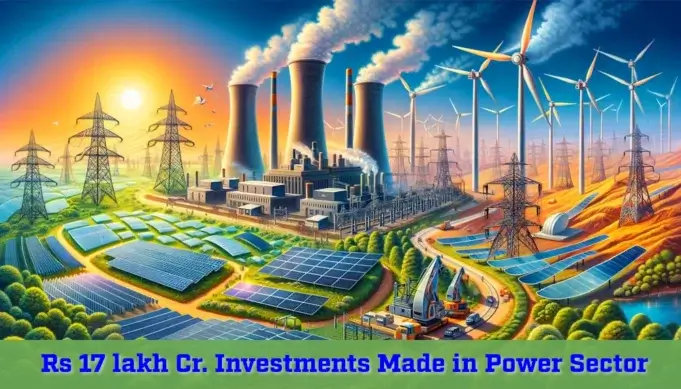Union Power and New & Renewable Energy Minister R. K. Singh announced that significant investments totalling Rs 17 lakh crores have been made in the power sector over the past nine years. Additionally, he highlighted that there is an upcoming investment of approximately Rs 17.5 lakh crores in power capacity under construction.
The minister emphasized the vital role of electricity in infrastructure and development. He noted that one of the key distinctions between developing and developed nations is the absence of power shortages in the latter. Singh pointed out that India has made substantial progress in reducing power shortages, decreasing from around 4.5 percent in 2014 to less than one percent today. The country has achieved universal electricity access, connecting 29 million homes in just 19 months, an achievement recognized by the International Energy Agency as the largest and fastest expansion of energy access in the power sector’s history.
The minister highlighted the addition of 194 GW of power capacity, with approximately 107 GW coming from renewable sources. India has constructed an extensive 193,000 circuit km of transmission lines, establishing the world’s largest integrated grid with one frequency. Power transfer capacity has also increased significantly, from 36 GW to 117 GW.
Furthermore, thousands of substations, circuit km of transmission lines, transformers, and other equipment have been added or upgraded. As a result of these efforts, rural areas now have access to electricity for approximately 21 hours a day, while urban areas enjoy 23.8 hours of power.
India has emerged as a leader in the transition to renewable energy, with a current renewable capacity of 187 GW. The country has already surpassed its target of having 40 percent of its capacity from non-fossil-fuels by 2030, reaching 44 percent. Now, India aims to have 65 percent of its capacity from non-fossil sources by 2030.
Minister Singh also highlighted the substantial investments in the power sector, totalling Rs 17 lakh crores over the last nine years, with an additional Rs 17.5 lakh crores invested in capacity under construction. The renewable energy sector is set to expand further, with 99 GW of renewable energy capacity under construction and 32 GW in the bidding stage. India is also making strides in thermal capacity, with 27 GW under construction and additional capacity in various stages of development.
Singh emphasized the government’s efforts to make the power sector more viable, reducing AT&C losses from 27 percent to 15.41 percent, with further goals to lower them to 10 percent – 11 percent.
Regarding the rising power demand, the Minister noted a significant increase, with peak demand expected to surpass 400 GW by 2030. India is committed to adding enough capacity to meet this demand, aiming for over 500 GW of renewable capacity by 2030.
India remains competitive in renewable energy, offering the world’s cheapest renewable energy despite subsidies and protectionist measures elsewhere. The country is also expanding energy storage capacity with pumped storage projects and battery storage construction.
Minister Singh announced a Production Linked Incentive Scheme for grid-scale storage, further reducing storage costs. The government’s interventions, such as custom duties on solar modules and cells, have led to increased module manufacturing capacity. India is also considering manufacturing larger-capacity wind turbines.
Furthermore, India has met its commitments to reduce emissions intensity and has achieved significant reductions in carbon emissions through various energy-saving programs. The government has introduced business-friendly regulations like General Network Access and Green Energy Open Access Rules, facilitating easier energy generation, purchase, and sales across the country.











